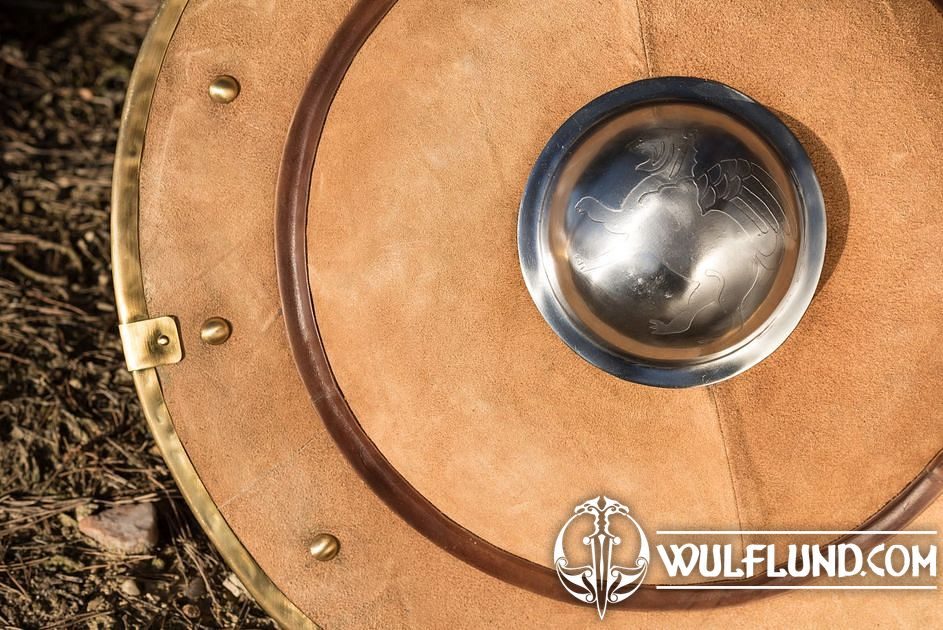

The exact time when hoplitic warfare was developed is uncertain, the prevalent theory being that it was established sometime during the 8th or 7th century BC, when the "heroic age was abandoned and a far more disciplined system introduced" and the Argive shield became popular. Hoplites on an aryballos from Corinth, ca. In later usage, the term hoplite is used to denote any armored infantry such as the Swiss mercenaries during the Burgundian Wars (1474–1477).
#ANCIENT GREEK HOPLITE SHIELD FULL#
ὁπλίται hoplitai) derives from " hoplon" ( ὅπλον, plural hopla ὅπλα), the type of the shield used by the soldiers, although, as a word, "hopla" could also denote the weapons held or even full armament. The word " hoplite" (Greek: ὁπλίτης hoplitēs pl. The Persian archers and light troops who had fought in the Battle of Marathon failed when their bows were too weak and incapable of penetrating the Greek shields and armour, and their own armour and shields could not stand up to the longer spears and swords of the Greeks. This new tactic proved to be a success during the Battle of Marathon in 490 BC and the Battle of Plataea in 479 BC, when the Greeks defeated the Persians. In 700 BC, a military innovation called the phalanx formation was introduced. Hoplites generally received basic military training.
#ANCIENT GREEK HOPLITE SHIELD FREE#
They were primarily free citizens-propertied farmers and artisans-who were able to afford the bronze armor suit and weapons (estimated at a third to a half of its able-bodied adult male population). Their main tactic was the phalanx formation. Hoplites were citizen-soldiers of Ancient Greek city-states who were primarily armed with spears and shields. Recreation of a 4th–3rd century BC hoplite, shown carrying an aspis shield (or hoplon). Thus the most experienced hoplites were often placed on the right side of the phalanx to counteract these problems.File:Ancient Greece hoplite with his hoplon and dory.jpg Also, the right side of the phalanx, where right arms were unprotected by neighboring shields, was more vulnerable than the left.

Phalanxes tended to drift right in battle as each hoplite sought to keep his right arm behind the shield of his neighbour. Upon command of an officer, the phalanx would take a certain number of steps forward. The ranks behind would support them with their spears and gently push them with their shields, not to force them into the enemy but to keep them steady and in position.

The first row would stab at their opponents while trying to maintain close formation. The phalanx trained to work as a team eight rows or more deep. Their great adversaries, the Athenians, were exempted from service after the 60th year of life. The citizens of Sparta were renowned for their lifelong combat training and military prowess. In most Greek city-states citizens received basic military training and served in the standing army for a specified time, participating in any military campaign undertaken during that period. In later texts, the term hoplite is used to denote any armoured infantry, regardless of armament or ethnicity.Ī hoplite was usually a free citizen who supplied his own armour and weapons. The word " hoplite" comes from the type of the shield used by the soldiers. In a phalanx, each man's shield protected himself and also gave some protection to the right arm of the man on his left. They fought close together in what was called a phalanx formation. The shield has a curtain as a protection from arrowsĪ hoplite was a citizen-soldier of the Ancient Greek city-states. A hoplite by Alkimachos, on an Attic red-figure vase, ~460 BC.


 0 kommentar(er)
0 kommentar(er)
